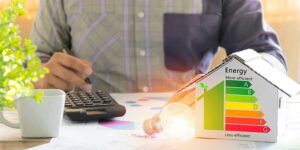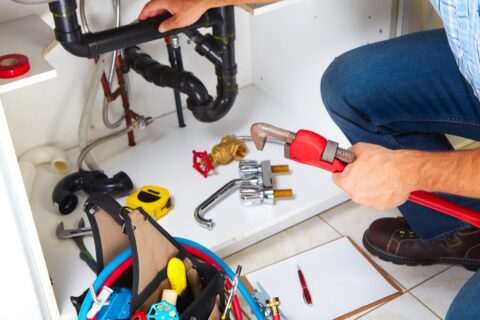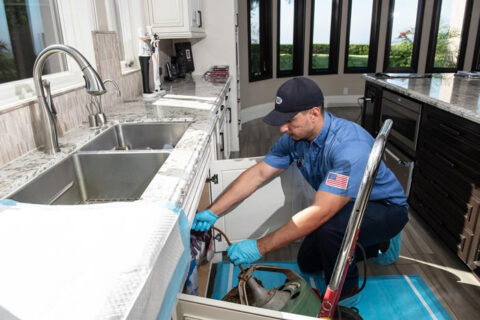A Comprehensive Guide to HVAC Energy Audits
The ac energy audit process explained can seem complex, but it’s simpler than you think. Understanding how your AC system uses energy can save you money and improve efficiency. Many people overlook this crucial step in form, leading to higher bills and wasted energy.
A thorough audit reveals hidden issues and provides actionable insights. You’ll discover ways to optimize your system for better performance based on the energy audit findings from the energy efficiency audit and the energy audit study, ensuring a good energy audit. This guide breaks down the audit process into easy steps. You’ll learn what to expect, how to prepare, and the benefits of a well-conducted audit. Don’t let confusion hold you back from making informed decisions about your AC energy usage.
Key Takeaways
-
Conducting an HVAC energy audit is essential for identifying areas where energy is wasted, which can lead to significant savings on utility bills.
-
Follow the key steps in the audit process, including gathering data, inspecting systems, and analyzing performance to ensure a thorough evaluation.
-
Understand what HVAC audits measure, such as energy consumption and system efficiency, to better assess your building’s energy performance.
-
Familiarize yourself with the different types of energy audits available, as each type can provide unique insights tailored to your specific needs.
-
Scheduling regular audits can help you stay ahead of maintenance issues and improve overall system efficiency, providing long-term benefits for your facility.
-
Evaluate the potential savings from an audit by considering both immediate cost reductions and long-term energy performance enhancements.
Understanding HVAC Energy Audits
Definition
An HVAC energy audit evaluates the efficiency of heating, ventilation, and air conditioning systems. This process identifies how much energy these systems use and where improvements can be made. Conducting an HVAC energy audit is essential for maintaining system efficiency. It helps in detecting issues that may lead to wasted energy and increased costs.
Auditor’s Role
An HVAC energy auditor plays a critical role in this process. They assess the current performance of the HVAC system. The auditor examines various components, such as ductwork, insulation, and equipment settings. By doing so, they can identify potential problems like leaks or inefficiencies during a home energy audit and an energy efficiency audit.
The auditor provides valuable insights into how to enhance system performance. They often use specialized tools to measure airflow and temperature differences during a home energy audit and energy efficiency audit. These findings allow homeowners to understand their energy consumption better.
Importance of Regular Audits
Regular audits contribute significantly to building sustainability. They help in identifying areas for improvement that can reduce energy usage. With rising energy costs, a focus on energy efficiency becomes crucial for homeowners and businesses alike.
Homeowners benefit from routine home energy audits by saving money over time. A comprehensive residential energy audit can reveal simple fixes that improve efficiency without major investments. For example, a home energy audit shows that sealing duct leaks can enhance airflow and reduce heating or cooling needs during an energy efficiency audit.
Furthermore, consistent auditing supports broader energy management goals. Many organizations implement an energy audit program to track performance over time. This ongoing assessment fosters accountability and encourages ongoing improvements.
Energy Audit Findings
The findings from an HVAC energy audit guide decision-making. Homeowners receive reports detailing current system performance and recommendations for upgrades. These may include a home energy audit, replacing outdated equipment with more efficient models or improving insulation.
The results can highlight the need for regular maintenance checks. An effective energy auditing process leads to fewer breakdowns and longer equipment lifespan. This proactive approach ensures that systems operate efficiently throughout their service life.
Key Steps in the Audit Process
Initial Preparation
Auditors must prepare before starting an HVAC energy audit. This preparation includes gathering relevant documents. These documents might include past utility bills, maintenance records, and system specifications.
Identifying goals is crucial at this stage. Auditors need to understand what the client hopes to achieve. This could be reducing energy costs or improving system efficiency.
Next, auditors assess the building’s layout and occupancy patterns. They may review blueprints or floor plans. This helps in understanding how energy flows through the space.
On-Site Inspection
The on-site inspection is a critical part of the audit process. Auditors check various equipment during this phase. They inspect heating, ventilation, and air conditioning systems for efficiency.
Data collection occurs here as well. Auditors gather information on energy consumption and operational patterns. They may use tools like thermal cameras or data loggers to capture real-time data.
During the inspection, auditors also look for issues such as leaks or poor insulation. Identifying these problems can help pinpoint areas for improvement.
Interviews with building staff are valuable too. Staff can provide insights into daily operations and any challenges faced with the HVAC systems.

Post-Audit Analysis
After the on-site inspection, auditors analyze their findings. They review collected data and compare it with industry benchmarks. This analysis helps identify inefficiencies within the HVAC systems.
Recommendations follow this analysis. Auditors create a detailed report outlining their findings. This report often includes suggestions for upgrades or repairs.
For example, if an auditor finds that a system runs inefficiently, they might recommend replacing outdated components. They may also suggest adjusting settings for optimal performance.
Clients receive this report along with potential cost savings from proposed changes. This information helps clients make informed decisions about their HVAC systems.
What HVAC Audits Measure
Performance Metrics
HVAC audits focus on several performance metrics. These metrics include energy consumption, airflow rates, and temperature control. Energy consumption indicates how much energy the HVAC system uses over time.
Airflow rates measure how effectively air moves through the system. Temperature control assesses whether the system maintains desired indoor temperatures. Each of these metrics is crucial for understanding the overall efficiency of the HVAC system.
Energy Consumption
Measuring energy consumption is vital. High energy use can lead to increased costs. An audit identifies areas where energy is wasted. This helps homeowners and businesses save money.
Operational efficiency also plays a key role in energy savings. Efficient systems use less energy while providing the same comfort levels. Auditors often recommend upgrades or repairs based on these findings.
Air Quality Assessment
Assessing air quality is an important part of an HVAC audit. Poor air quality can lead to health issues. It may cause allergies or respiratory problems for occupants. The audit evaluates factors such as humidity levels, dust accumulation, and ventilation effectiveness.
Comfort levels are equally significant. A comfortable environment improves productivity and satisfaction. The audit checks if the HVAC system circulates air properly. This ensures even temperatures throughout the space.
Checklist Items
An HVAC system audit checklist typically includes:
-
Thermostat settings: Checking if they are programmed correctly.
-
Filter condition: Ensuring filters are clean and functional.
-
Ductwork inspection: Looking for leaks or blockages.
-
Refrigerant levels: Verifying proper amounts in cooling systems.
-
System age: Assessing whether it’s time for replacement.
These items help auditors pinpoint inefficiencies and suggest necessary changes.
Benefits of Auditing
Conducting an HVAC audit has multiple benefits. It can extend the life of the system by identifying maintenance needs early. Regular audits can also enhance energy efficiency, leading to lower utility bills.
Furthermore, audits promote better indoor air quality, which is essential for health. Improved comfort levels contribute to a more pleasant living or working environment.
Types of Energy Audits
Basic Audit
A basic energy audit is often the first step for many building owners. This type involves a simple walkthrough of the facility. Auditors look for obvious energy waste and inefficiencies. They assess lighting, insulation, and HVAC systems.
Data collected includes an overview of current energy use. This audit helps identify quick fixes that can reduce costs. For small buildings or homes, a basic audit is usually sufficient. Owners benefit from immediate insights without extensive investment.
Detailed Audit
A detailed energy audit goes deeper into energy use. It requires more comprehensive data collection. Auditors analyze equipment performance and operational practices. They may use specialized tools to measure energy consumption accurately.
This level is suitable for larger facilities or those with high energy bills. The detailed audit provides a clearer picture of where savings can occur. Building owners receive a report outlining recommendations and potential savings.
Comprehensive Audit
The comprehensive energy audit is the most in-depth option available. It assesses all aspects of a building’s energy usage. This includes evaluating mechanical systems, building envelope, and occupant behavior.
Auditors collect extensive data over time, often using advanced monitoring software. They analyze how different systems interact and affect overall efficiency. This audit is ideal for large industrial facilities or organizations aiming for significant energy reductions.
Industrial Audit
Industrial energy audits focus specifically on manufacturing and production facilities. These audits address unique challenges faced by industries. They evaluate machinery, processes, and operational practices.
Data collected includes production schedules and machine efficiency ratings. The goal is to identify opportunities for reducing waste and improving productivity. Owners of industrial sites benefit greatly from these targeted assessments.
Free Energy Audits
Many utility companies offer free energy audits as part of their services. These programs encourage customers to improve their energy efficiency. While these audits may not be as thorough, they provide valuable insights.
Owners can learn about available rebates or incentives for upgrades. Free audits are particularly beneficial for residential properties seeking immediate solutions.
Quality Audit Firms
Choosing a reputable energy audit firm is crucial for accurate results. A good firm uses proven methodologies and experienced auditors. They should offer various services, including site assessments and reporting.
Quality firms also utilize advanced energy auditing software platforms to enhance their analysis. This technology aids in providing detailed reports tailored to specific building needs.
Benefits of Scheduling an Audit
Prevent System Failures
Scheduling an energy audit can help prevent future HVAC system failures. Regular checks identify issues before they escalate. Auditors can spot worn-out components, dirty filters, or improper settings. These problems can lead to system breakdowns if left unchecked.
For example, a small refrigerant leak may seem minor at first. Over time, it can cause the compressor to fail completely. This failure can mean costly repairs or even a full system replacement. By scheduling audits regularly, homeowners can catch these issues early. This proactive approach keeps systems running smoothly and avoids unexpected costs.
Long-Term Cost Savings
Improved energy efficiency leads to significant long-term cost savings. Energy audits reveal where energy is wasted. They assess insulation quality, air leaks, and appliance performance. Fixing these issues reduces energy consumption.
For instance, sealing air leaks around windows and doors can lower heating and cooling bills. According to the U.S. Department of Energy, homeowners can save up to 20% on their energy costs by improving efficiency. Newer appliances often use less energy than older models. Upgrading to energy-efficient options after an audit can further reduce bills.
Homeowners may also qualify for rebates or incentives when making energy-efficient upgrades. These financial benefits make the initial investment in an audit worthwhile.
Enhanced Indoor Air Quality
Regular audits enhance indoor air quality significantly. Poor indoor air can lead to health problems like allergies and respiratory issues. An energy audit assesses ventilation systems and air quality levels.
Auditors check for pollutants and allergens in the home environment. They recommend improvements like better filters or ventilation upgrades. For example, installing a high-efficiency particulate air (HEPA) filter can trap harmful particles.
Better ventilation reduces humidity levels too. This helps prevent mold growth, which is crucial for maintaining a healthy living space. Improved indoor air quality not only benefits health but also increases comfort at home.
Assessing System Efficiency
Evaluation Methods
Assessing the efficiency of HVAC systems involves several methods. Technicians often start with visual inspections. They look for signs of wear and tear, leaks, or blockages. Next, they measure airflow and temperature differences across the system. These measurements help determine how well the system operates.
Another method is using diagnostic tools. These tools can include manometers and flow hoods. They provide precise readings of pressure and airflow. This data is crucial for understanding system performance.
Energy consumption data also plays a role in evaluating efficiency. By analyzing utility bills, technicians can identify patterns in energy use. A spike in usage may indicate inefficiencies in the system.
Benchmarking Standards
Benchmarking against industry standards is essential during assessments. Standards provide a reference point for evaluating system performance. For example, the American Society of Heating, Refrigerating and Air-Conditioning Engineers (ASHRAE) offers guidelines that many professionals follow.
These benchmarks help identify areas needing improvement. If a system falls below these standards, it indicates potential issues. This process ensures that systems operate at optimal levels.
Furthermore, benchmarking allows for comparisons between similar systems. Technicians can assess how one building’s HVAC system performs against another’s. This information can guide decisions on upgrades or repairs.
Informing Upgrades
Findings from the audit directly inform necessary upgrades or repairs. Auditors compile their observations into a report. This report outlines areas where efficiency can improve.
For instance, if an audit reveals that insulation is lacking, upgrading insulation becomes a priority. Improved insulation can lead to significant energy savings over time.
Similarly, outdated equipment may need replacement. If the audit shows that an older unit consumes more energy than newer models, replacing it could be beneficial. Newer units often have better technology and higher efficiency ratings.
Audits also highlight maintenance needs. Regular maintenance keeps systems running smoothly. For example, cleaning filters and coils can enhance performance significantly.
Enhancing Energy Performance
Strategies for Improvement
Energy efficiency starts with understanding the audit results. One effective strategy is to prioritize changes that offer the highest return on investment. For example, upgrading insulation can significantly reduce energy costs. Sealing leaks around windows and doors also helps maintain comfort levels inside buildings.
Consider implementing programmable thermostats. These devices allow for better control over heating and cooling systems. They adjust temperatures based on occupancy, which enhances overall performance.
Role of Technology
Technology plays a crucial role in improving HVAC efficiency. Smart thermostats and sensors provide real-time data on system performance. They offer insights into how well the system operates under different conditions. This data allows providers to make informed decisions about necessary adjustments.
Automation can also optimize energy use. Systems can automatically adjust settings based on weather changes or occupancy patterns. This leads to improved sustainability as less energy gets wasted.
Ongoing Maintenance Practices
Regular maintenance is essential for sustaining energy performance improvements. Schedule routine inspections for HVAC systems. Professionals should check filters, ducts, and coils to ensure they function correctly. Dirty components can lead to increased energy consumption.
Implementing a maintenance plan can prevent problems before they arise. Regular servicing keeps systems running efficiently, which contributes to long-term savings on energy costs.
Another key practice is monitoring energy usage continuously. Tracking consumption helps identify unusual spikes in usage. Addressing these issues promptly can prevent larger problems down the line.
Additional Requirements
e buildings may have additional energy auditing requirements based on local regulations. Understanding these guidelines ensures compliance and promotes best practices in energy management. Engaging with a professional provider familiar with these standards can streamline this process.
Comfort and Environment
Improving energy performance not only reduces costs but also enhances indoor comfort. A well-functioning HVAC system maintains consistent temperatures throughout the building. It creates a more pleasant environment for occupants.
Moreover, boosting energy efficiency contributes positively to the environment. Reducing reliance on fossil fuels lowers emissions and promotes a healthier atmosphere.
Evaluating Savings Potential
Calculating Savings
Building owners can calculate potential savings by comparing energy consumption before and after the audit. This process involves collecting data on energy usage over a specific period. The pre-audit data serves as a baseline. After implementing recommended changes, owners can analyze post-audit data to see reductions in energy use.
For example, if a building used 10,000 kilowatt-hours (kWh) per month before the audit and reduced usage to 7,500 kWh after upgrades, the monthly savings equal 2,500 kWh. Owners can then multiply these savings by their local utility rates to determine cost savings. If the rate is $0.12 per kWh, the monthly savings amount to $300. Over a year, that totals $3,600.
Financial Incentives
Many financial incentives exist for energy-efficient upgrades. Local governments and utilities often provide rebates for implementing energy-saving measures. These rebates can significantly reduce initial costs. For instance, installing energy-efficient lighting may qualify for a rebate of up to 30% of the installation cost.
Tax credits are also available. In some cases, building owners can receive up to 10% off their tax bill for making energy-efficient improvements. Researching local programs is essential. Each state or municipality may offer different incentives based on their energy efficiency goals.
Long-term ROI
Considering the long-term return on investment (ROI) is crucial for building owners. While upfront costs for energy audits and upgrades may seem high, the savings over time often outweigh these expenses. Energy-efficient buildings attract tenants more easily due to lower utility costs.
For example, a commercial building that invests $50,000 in energy upgrades could save $5,000 annually in energy costs. Over ten years, those savings would total $50,000, effectively paying back the initial investment. These upgrades can increase property value, making them even more appealing.
Building owners should also factor in rising energy prices when evaluating ROI. Energy costs tend to increase over time. By investing in energy efficiency now, owners can lock in lower operational costs for years ahead.
Summary
The HVAC energy audit process is essential for optimizing your system’s performance. You’ve learned about the steps involved, what gets measured, and the types of audits available. Understanding these elements helps you grasp the benefits of scheduling an audit. Enhanced efficiency leads to significant savings and improved comfort in your space.
Now is the time to take action. Schedule your HVAC energy audit today to unlock potential savings and boost your system’s efficiency. Don’t wait—your future energy costs depend on it. Invest in a smarter, more efficient HVAC system for a greener tomorrow!
Frequently Asked Questions
What is an HVAC energy audit?
An HVAC energy audit is a comprehensive evaluation of heating, ventilation, and air conditioning systems. It identifies inefficiencies, measures performance, and recommends improvements to enhance energy savings and comfort.
Why should I schedule an energy audit?
Scheduling an energy audit helps you pinpoint inefficiencies in your HVAC system. This can lead to reduced energy bills, improved comfort, and a smaller carbon footprint, providing long-term financial and environmental benefits.
How long does an HVAC audit take?
Typically, an HVAC energy audit takes between 2 to 4 hours. The duration depends on the size of the building and the complexity of the HVAC systems involved.
What tools are used during an energy audit?
Common tools include infrared thermometers, blower doors, duct leakage testers, and energy monitoring devices. These tools help assess system performance and identify areas for improvement.
Are energy audits expensive?
The cost of an energy audit varies based on the building’s size and location. However, many find that the long-term savings on energy bills far outweigh the initial investment.
Can I perform a DIY energy audit?
While basic assessments can be done by homeowners, a professional audit offers comprehensive insights. Certified auditors use specialized tools and expertise to ensure accurate evaluations and recommendations.
How often should I conduct an HVAC energy audit?
It’s advisable to conduct an HVAC energy audit every 1-3 years. Regular audits help maintain system efficiency and adapt to changes in usage or technology over time.


